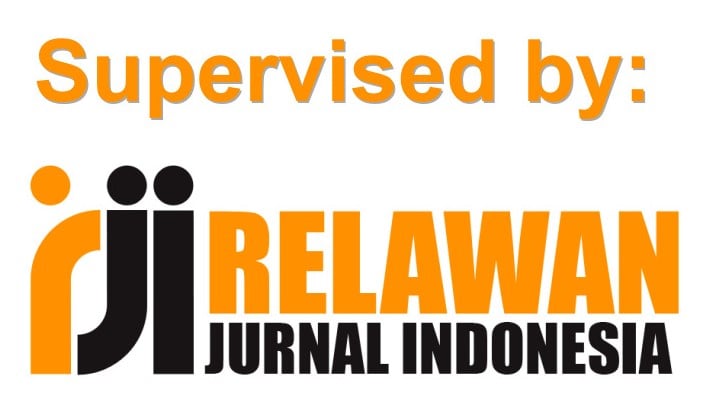MOTIVASI MASYARAKAT DESA TELAGA SILABA KECAMATAN AMUNTAI SELATAN TERHADAP PENGOBATAN BACABUT
DOI:
https://doi.org/10.18592/jsi.v2i2.1095Keywords:
motivasi, makhluk supranatural, mistis, magis, bacabut pengobatanAbstract
This paper describes the phenomenon of mysticism outside of religion, namely ‘Bacabut’ treatment. Named ‘Bacabut’ treatment because this treatment can remove the disease from the body in the form of objects such as gravel, broken glass, leather of walnut, ironwood, or ‘Sagar’ (palm stick). The treatment is performed by a physic who gains strength / magic that comes from the help of supernatural beings in the spirit world which is called ‘friend’ (gampiran). In the middle of the progress of society in every field, the understanding and primitive behavior sometimes still influence their lives. People’s dependence on primitive belief and the power of supernatural mystical and magical, making they are sick to prefer going to psychic / shaman to cure the illness than going to a doctor or a health worker. Psychologically, their motivation for treatment to the ‘Bacabut’ treatment divided to two kinds of intrinsic and extrinsic motivation. The intrinsic motivation consists of their own accord and they would like to know / to try it. There are some extrinsic motivations, such as families’ suggestion, many people who come there for treatment, be sure by seeing the evidence. It’s simple, close and it does not specify rates/cheap.References
Ahmadi, Abu, (1985). Psikologi Sosial, Surabaya: PT. Bina Ilmu.
Al-Bukhari, Abu Abdillah, (1935). Shahih al-Bukhari, Jilid 13, Mesir: al-Mathba’ahal-Mishriyyah Muhammad Abdul Latif.
Arifin, M., (1977). Psikologi Da’wah, Suatu Pengantar Studi, Jakarta: Bulan Bintang.
Daud, Alfani, (1997). Islam dan Masyarakat Banjar, Jakarta: Raja Grafindo Persada.
F. Patty, et. al., (1982). Pengantar Psikologi Umum, Surabaya: Usaha Nasional.
Fachruzie, Irham, (2000). Betulkanlah Tauhid Anda, Menguak Rahasia Agama dan Ketuhanan Berdasarkan Rialita Allah-Hamba, Surabaya: CV. Al-Ihsan.
Gerungan, W. A ., (1991). Psikologi Sosial., Bandung: PT. Eresco.
Hasyim, Umar, Setan Sebagai Tertuduh, Surabaya: PT. Bina Ilmu, 1978.
Hasting, James, (ed), (1955). Encyclopidea of Religion and Ethics, Vol. VII, XII, New York: Charles Scribners Soons.
Jalaluddin, (1996). Psikologi Agama, Jakarta: Raja Grafindo Persada.
Maslow, Abraham H., (1993). Motivasi dan Kepribadian: Teori Motivasi dengan Pendekatan Hierarki Kebutuhan Manusia, terj. Nurul Imam, Jilid 1, Jakarta: LPPM.
Proyek Pembinaan Perguruan Tinggi Agama Islam, Perbandingan Agama I, Jakarta: Direktorat Perguruan Tinggi Agama Islam, 1981/1982.
Poerwadarminta, W.J.S., (1976). Kamus Umum Bahasa Indonesia, Jakarta: Balai Pustaka.
Sarwono, Sarlito Wirawan, (1982). Pengantar Umum Psikologi, Jakarta: Bulan Bintang.
Sya’rawi, Muhammad Mutawalli, (1991). Sihir dan Hasad, Terj. Salim Basyarahil, Jakarta, Gema Insani Perss.
Thouless, Robert H., (1995). Pengantar Psikologi Agama, diterjemahkan oleh Machnun Husein, judul asli: An Introduction to the Psychology of Religion, h. 219, Jakarta: Raja Grafindo Persada.
Al-Qardhawi, Muhammad Yusuf, (1980). Halal dan Haram Dalam Islam, alih bahasa Ammal Hamidy, Surabaya, Bina Ilmu.
Wahhab, Muhammad bin Abdul, (1978). Kitab al Tauhid - Alladzi Huwa Haqq Allah ‘ala al- ‘Abied, Alih bahasa K.H. Bey Arifin, et.al. dengan judul: Bersihkanlah Tauhid Anda dari Noda Syirik, Surabaya: PT. Bina Ilmu.
Downloads
Published
How to Cite
Issue
Section
License
Authors who publish with this journal agree to the following terms:
- Authors retain copyright and grant the journal right of first publication with the work simultaneously licensed under a Creative Commons Attribution License that allows others to share the work with an acknowledgment of the work's authorship and initial publication in this journal.
- Authors can enter into separate, additional contractual arrangements for the non-exclusive distribution of the journal's published version of the work (e.g., post it to an institutional repository or edit it in a book), with an acknowledgment of its initial publication in this journal.
- Authors are permitted and encouraged to post their work online (e.g., in institutional repositories or on their website) before and during the submission process, as it can lead to productive exchanges, as well as earlier and greater citation of published work (See The Effect of Open Access).





















